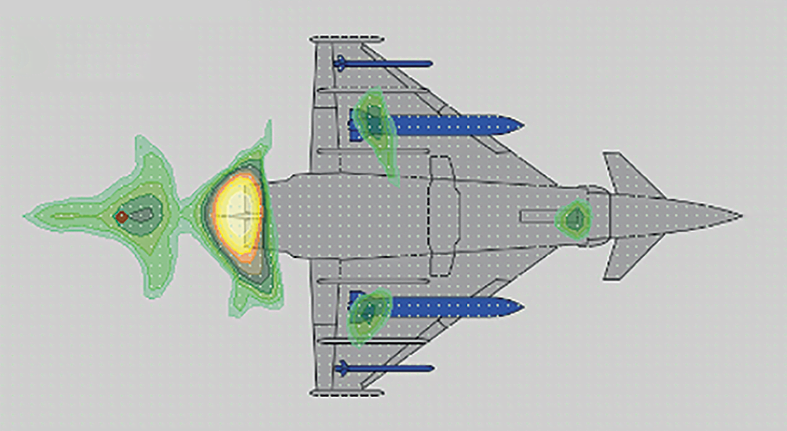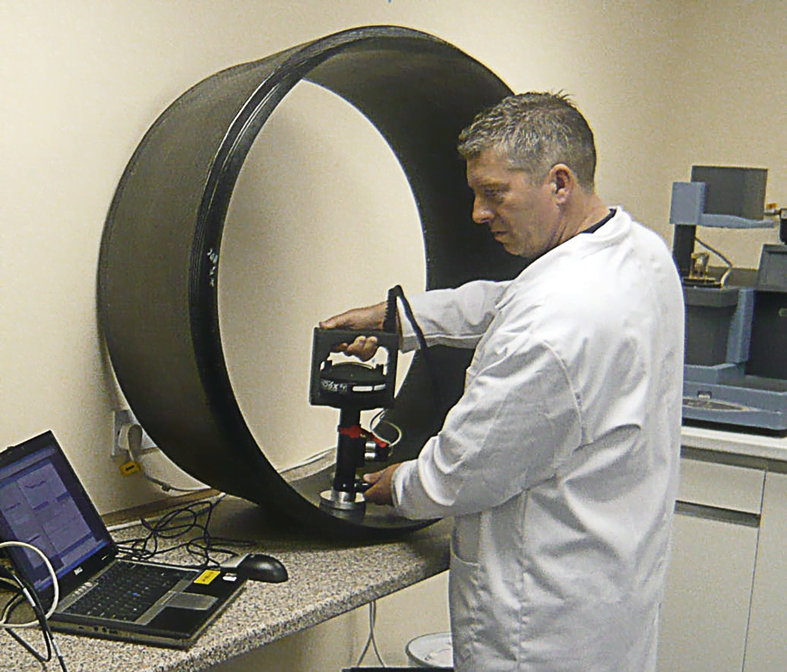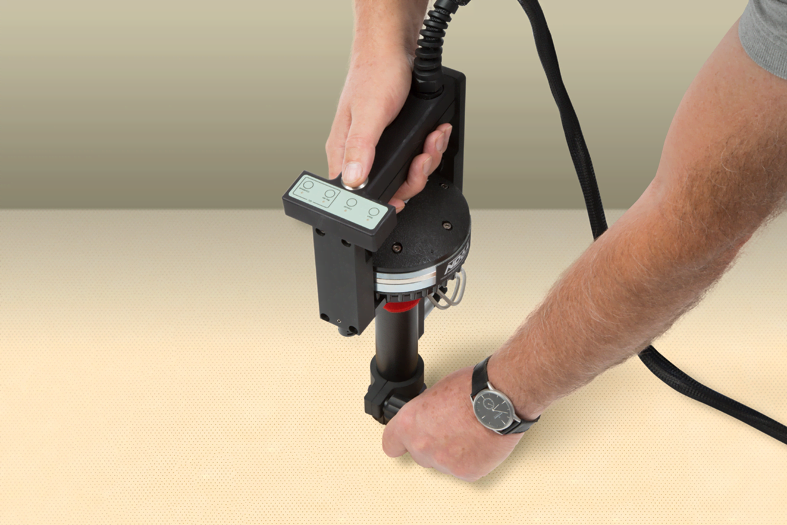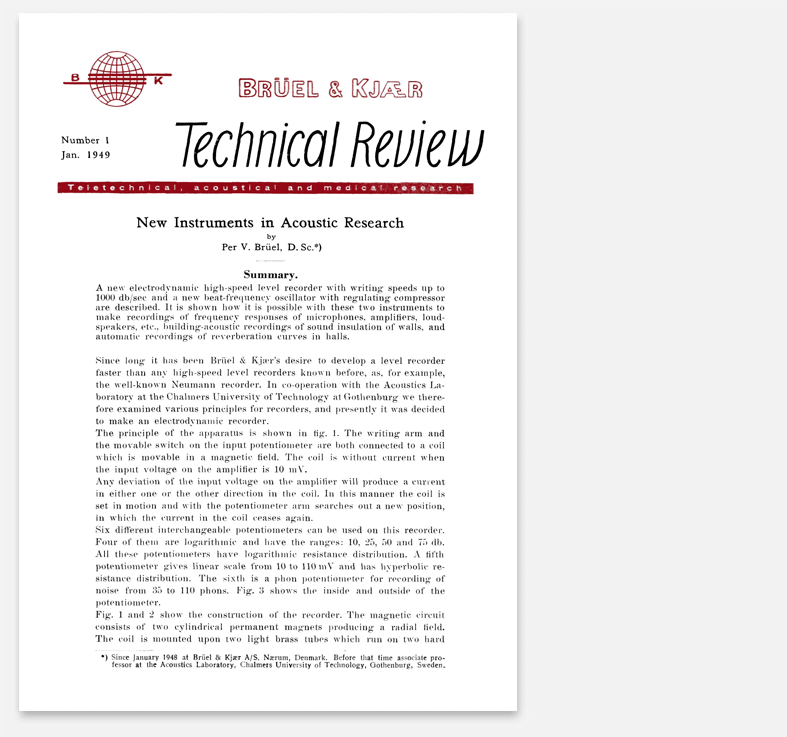For example, read on for the highlights from two white papers examining how noise models are validated for military aircraft, and how commercial aircraft manufacturers are using a new method to measure the noise impedance in the acoustic panels that line engine ducts. For the full details, visit our Knowledge Centre and read the latest issue of the Technical Review that has both of the complete white papers.

Flight test validation of noise models for high-performance military aircraft using beamforming
Airbus Defence and Space is in the process of developing software to optimize the airport take-off and landing-approach paths of their military aircraft for minimum noise impact on nearby communities. Calculation of the noise impact requires computer models of the noise sources on the aircraft, the propagation paths (including possible reflections) and the metric(s) used to quantify the perceived noise on the ground. The main noise sources on the aircraft are typically: jet, engine intake and aerodynamic sources around the landing gear and the airframe. Initially, Airbus used simple analytical models to quantify source strengths and directivities, but in order to get accurate predictions from the models, a test-based calibration must be performed.
In June 2015, Airbus Defence and Space asked Brüel & Kjær to propose a series of fly-over beamforming measurements for calibration of source levels and directivities for their Eurofighter Typhoon fighter jet. The Airbus project leader was Christian Waizmann, and Dr. Ernst Grigat was the technical project coordinator. They had seen our conference papers based on our cooperation with Japan Aerospace Exploration Agency (JAXA) on fly-over beamforming, which describe the use of a microphone array on the ground to localize and quantify noise sources on a passing business jet. A new challenge in connection with the Airbus measurements was the determination of not only source strengths but also their directivities.
A series of measurements was performed with Brüel & Kjær’s standard 135-element, 29-meter-diameter microphone array in November 2015 at Neuburg Airfield in Germany. A total of 20 flyover measurements were performed over two days. Synchronization between the array data and the on-board data of the aircraft was obtained using GPS time signal in both systems. The figure shows an example sound intensity contour map on the underside of the Typhoon for a flyover at an altitude of 47 m with a speed of 100 m/s. Averaging was performed while the aircraft approached at 10 m and 20 m ahead of the vertical axis of the array.
The landing gear was up, but two external fuel tanks were fitted under the wings (shown in blue). Based on maps for each position of the aircraft (relative to the array) and on a set of operational conditions, the sound power of the individual sources and their directivities could be estimated and used to update the computer model of noise radiation. Using the calibrated model, more effective minimization of community noise exposure can be performed.
New method for in situ measurement of acoustic absorption
Commercial aircraft manufacturers are always looking for ways to minimize airplane noise in the surrounding community. Acoustic panels line aero-engine ducts to reduce radiated noise levels, and quality control of these panels is under ever-increasing scrutiny. Approximate liner DC flow resistance measurements (frequency = 0 Hz) on unbonded acoustic materials have been replaced by measurements of the in situ acoustic impedance spectra of the fully bonded product after all manufacturing processes are complete. To meet this need, Brüel & Kjær has brought to the market a state-of-the-art flanged portable impedance tube, with routines for measurement of panel impedance, non-linearity, and quality control pass/fail tolerances.
The portable tube measures impedance, a parameter not normally assessed in interior acoustics, where the absorption parameter rules. However, impedance gives the designer the information needed to assess and refine the acoustic losses in a panel build-up.

Control of acoustic absorption is key to producing acceptable cabin acoustics in cars, trucks, trains, and airplanes as well as for room acoustics. Wall-mounted absorbers are one means to reduce the percentage of reflected sound. The acoustic absorption of large samples is typically measured in dedicated reverberation room facilities, while small-scale samples may be cut and inserted into impedance tubes. However, the final installed state is not always the same as that measured in a laboratory. The installed absorber build-up may differ due to variability in the absorber materials. It may also be affected by local constraints (for example, through induced changes to material densities, or by changes to the effective cavity depths). The measurement of the in situ acoustic performance of these absorbers has therefore recently gained greater focus as designers try to maximize the potential absorption per unit area in the installed environment.
Available methods for in situ measurement include the Adrienne in situ reflection method, and the Microflown p-u probe method. However, these procedures measure only the absorption coefficient spectrum of a given build-up, whereas the Brüel & Kjær tube measures both absorption and impedance, allowing an assessment of the frequency-dependent resistive and reactive components of a given installation. Crucially, this additional information allows a build-up to be either redesigned or refined to provide improved absorption per unit area.

Brüel & Kjær has recently performed a study comparing flanged impedance tube measurements with those taken in a reverberation room and from the traditional impedance tube method with a sample holder. The portable flanged impedance tube was shown to be quicker, simpler, and more repeatable than both the reverberation room and sample holder impedance tube tests. The portable tube allows fast non-destructive in situ material measurements as the meter just needs to be placed on the surface of the absorber. It is an excellent tool for benchmarking and may be used to measure the impact of the installation (for example, effects of facing sheets, curvature, material compression, bagging, etc.), while the impedance information may be used for re-tuning of the build-up for improved performance.
68 years of Technical Reviews
Since 1949 Brüel & Kjær has published 177 Technical Reviews. The first one was written by Dr Per Brüel and titled: ‘New Instruments in Acoustic Research’, describing the features and uses of the high-speed level recorder and the beat-frequency oscillator.

Knowledge center
The Brüel & Kjær Knowledge Center is our online library containing a wide range of detailed technical information.
Here you will find:
• Case studies
• Application notes
• Conference papers
• Primers and handbooks
• Technical reviews

Abonnieren Sie unseren Newsletter zum Thema Schall und Schwingung



